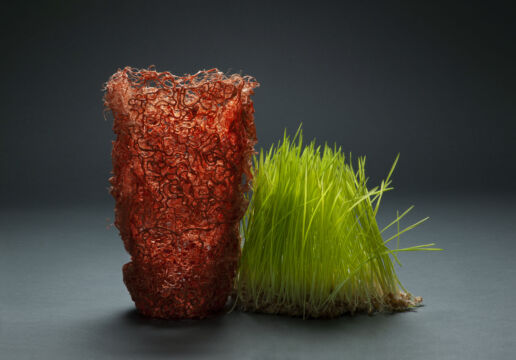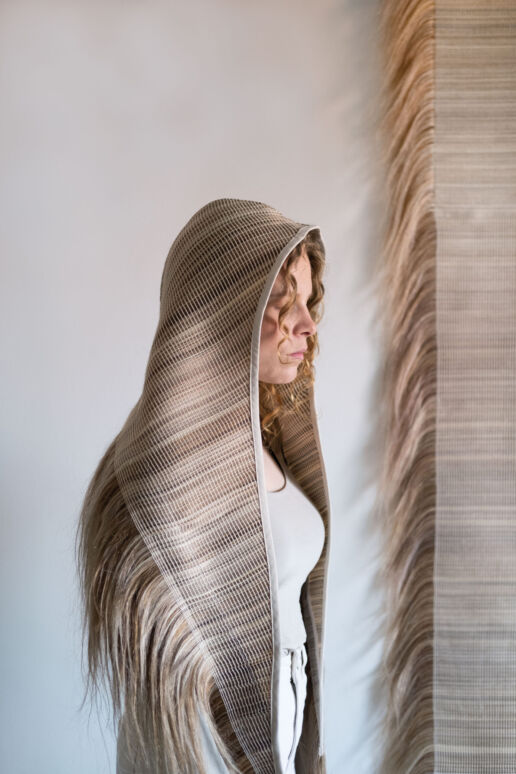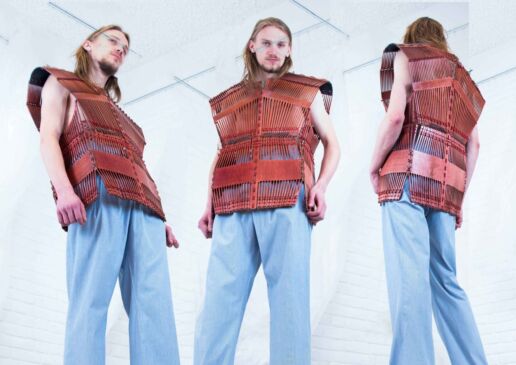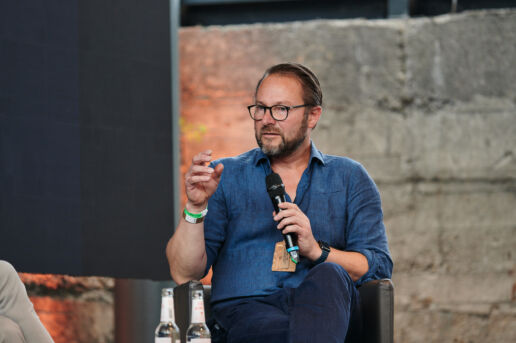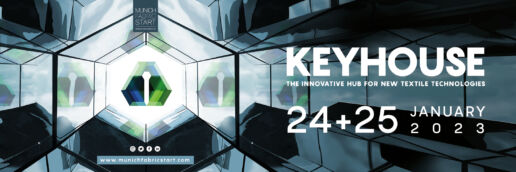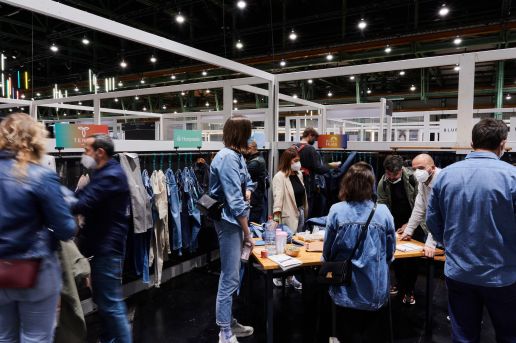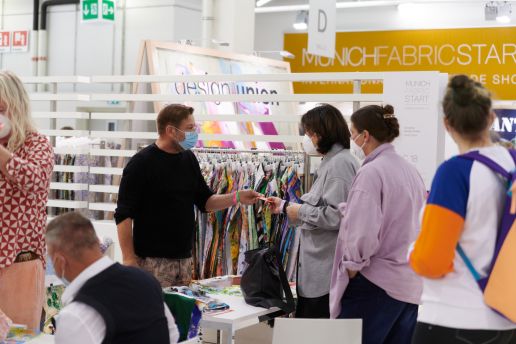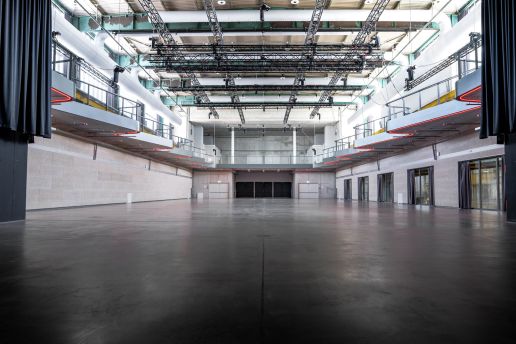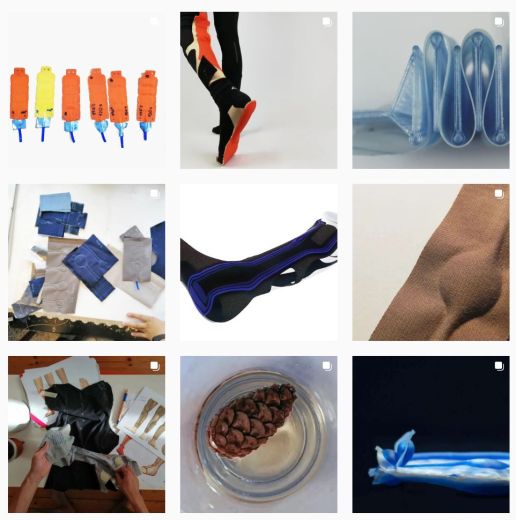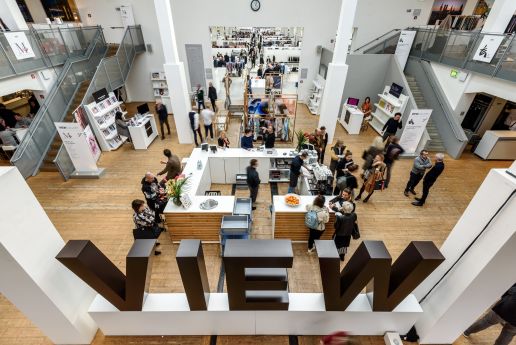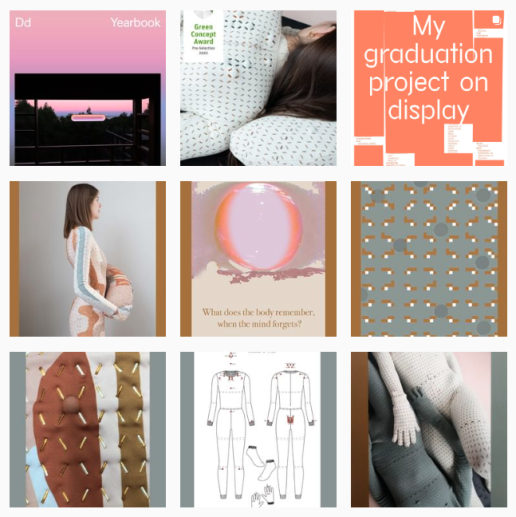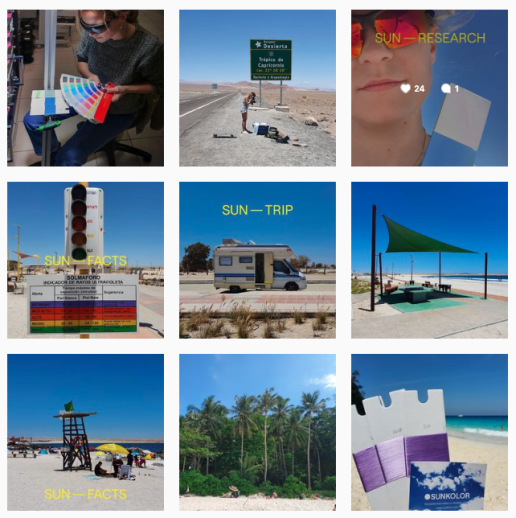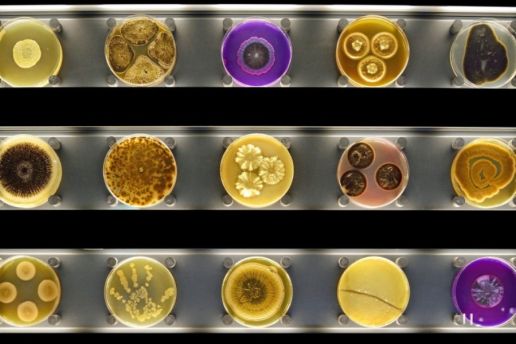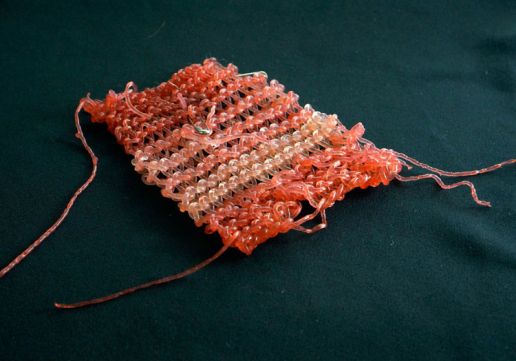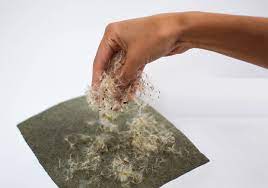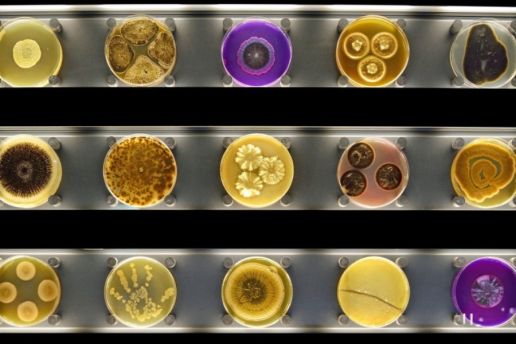Sustainable Innovations
Clothes that grow - Sustainable innovations
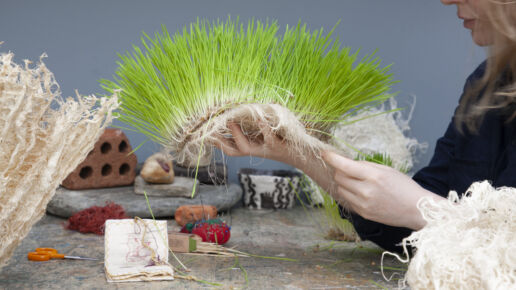
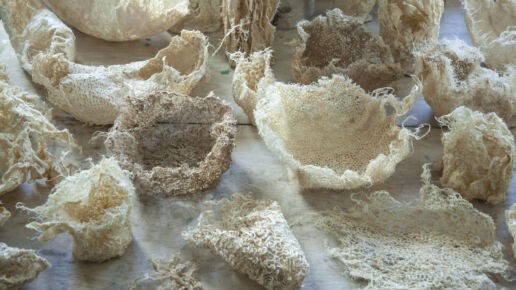
Nature as a 3D printer: material designer and underwater photographer Zena Holloway creates shapes and forms from wheat grass roots that grow in self-carved moulds made of beeswax. The supposed magic lasts for twelve days – the roots spread out horizontally or vertically and make their individual way through the wax templates. Depending on the shape of these, the roots either grow small in a confined space so that they become flat and compact, or if there is more space they can root deeper and three-dimensional shapes emerge. Immediately after harvesting, the roots are heavy and moist, after 24 hours they dry out and become light as a feather.
Each growth cycle produces a different result – all products are therefore individual pieces that can be further shaped by cutting, sewing, tearing or linking. For example, they can be used to create large, hanging structures, to shape vessels or to produce clothing and accessories. The wheatgrass roots also react particularly well to natural dyeing processes. In the name of sustainability: the water that accumulates and runs off during production can be reused and the leftover shoots, seeds or roots can be reused as animal feed. In addition, the dried root is a kind of botanical skeleton that binds carbon. Thus, the Rootful project demonstrates a micro-level approach to solving the complex problem of climate change.
“Growing artefacts from root is the simplest concept but captures the imagination of a wide audience.
I’m learning that root is a wonderful material to create fashion and art, serving to open up conversations around materiality and sustainability that inspire change.“
In the name of sustainability: the water that accumulates and runs off during production can be reused and the leftover shoots, seeds or roots can be reused as animal feed. In addition, the dried root is a kind of botanical skeleton that binds carbon.
Thus, the Rootful project demonstrates a micro-level approach to solving the complex problem of climate change.
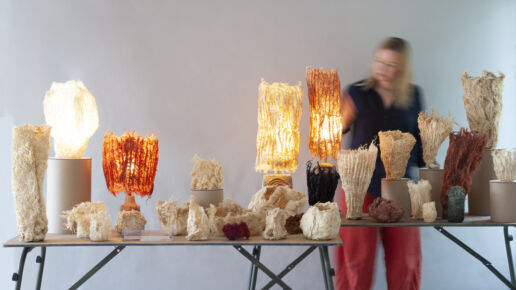
———————————————————————–
THAT MIGHT BE ALSO INTERESTING FOR YOU
KEYHOUSE NEWS – MOMENTUM
1. September 2024
Momentum plays a crucial role by providing the technology to create and manage these digital passports for fashion brands & suppliers ensuring compliance and fostering circular product development.
Cartoon – Fashion for courage, joie de vivre and self-realisation
1. September 2024
Cartoon sweeps through the fashion world with a fresh breeze of optimism, bringing colour not only to the wardrobe but also to everyday life.
Sustainable Innovations – Suzanne Oude Hengel
31. August 2024
Suzanne's goal: to push boundaries, experiment, and challenge the way things are done.
Hairy affair - Sustainable Innovation
Hair creates identity – we dye it, style it, create new looks and expressions, and associate ourselves with cultural or social groups. It loses meaning and becomes rubbish to be discarded. In her hair project, Savine School gives hair a second life.
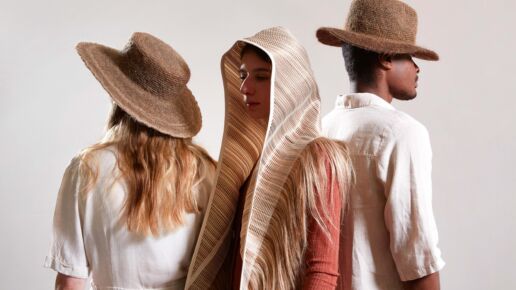
“Haar Haar focuses on the short switch from appreciating hair to feeling disgusted by it, even when it is the same material. It seeks to give a second life
to the material we treasured when it was on our head.“
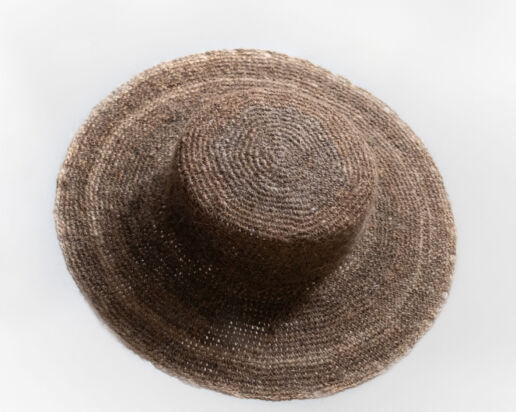
Every month, the textile designer and material researcher collects kilos of hair from various hair salons and extension studios and sorts them by colour and length. In the next step, she uses a machine to spin the hair together with wool into a uniform, flexible yarn. This yarn highlights the properties of both materials: the admixed wool offers the possibility to work with other tones beyond the hair colours, while the reflection of light on the hair provides a beautiful shimmer.
The designer uses the yarn to produce stylish accessories, such as crocheted hats – which at first glance have nothing to do with what ends up on the floor during a visit to the hairdresser. In this way, Savine Schoorl makes it clear that hair is a valuable resource and gives people the opportunity to discover the value of supposed waste in its second life cycle.
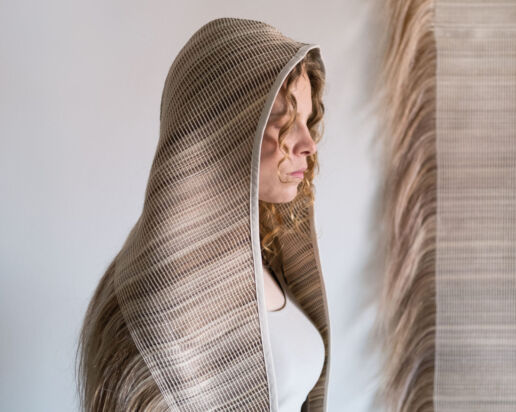
———————————————————————–
THIS MIGHT BE ALSO INTERESTING FOR YOU:
KEYHOUSE NEWS – MOMENTUM
1. September 2024
Momentum plays a crucial role by providing the technology to create and manage these digital passports for fashion brands & suppliers ensuring compliance and fostering circular product development.
Cartoon – Fashion for courage, joie de vivre and self-realisation
1. September 2024
Cartoon sweeps through the fashion world with a fresh breeze of optimism, bringing colour not only to the wardrobe but also to everyday life.
Sustainable Innovations – Suzanne Oude Hengel
31. August 2024
Suzanne's goal: to push boundaries, experiment, and challenge the way things are done.
A Suit of Armour - Sustainable innovations
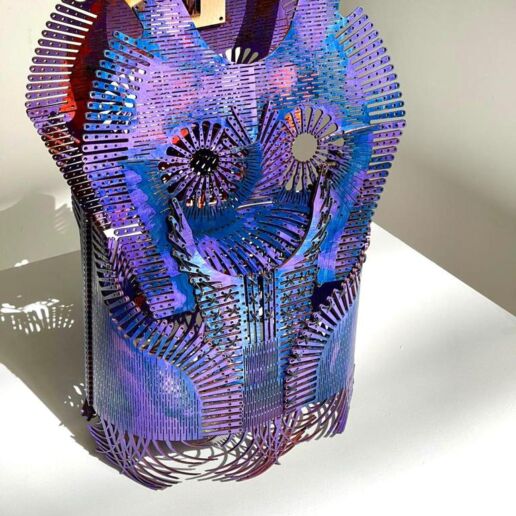
The name says it all: “Choub” means “wood” in Farsi – the material that designer Mehdi Mashayekhi draws on in his project Choub and uses innovative methods to create something new: Using digital fabrication, he has designed an abstract clothing collection for which he deconstructs the wood, giving the material new physical properties such as flexibility and stretchability.
The designer resorts to two methods: with topology optimisation, a computer-based process, he uses algorithmic models to determine the optimal shape of components in terms of load limits. The generative design method also creates new, powerful design options with the help of artificial intelligence. In this way, Mehdi Mashayekhi succeeds in solving complex requirements, distributing the weight of components and reducing manufacturing costs.
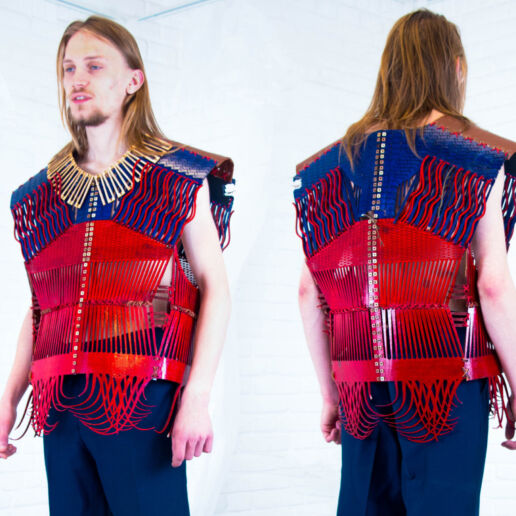
“Design is a glowing point in the cross-point between art and science, where reality meets vision.”
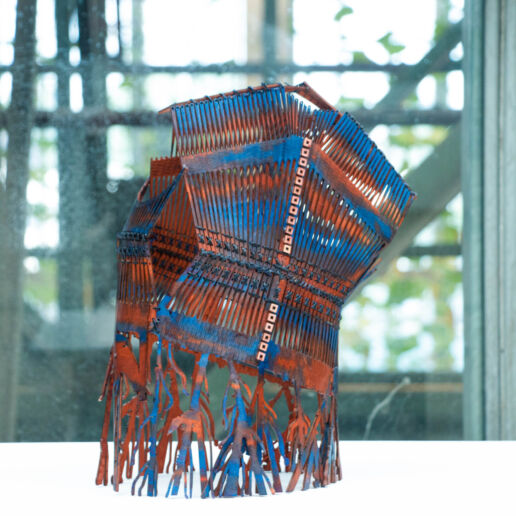
Innovative, unconventional, visionary: In the Choub project, 6mm thick plywood is used to create armour-like, portable constructions in which the wood loses its hardness and becomes flexible. Win-win: The designer optimises the use of materials in the design and at the same time provides a solution for upcycling waste. With the use of digital manufacturing, Mehdi Mashayekhi is helping to drive circularity and strengthen openness to materials and technical textiles.
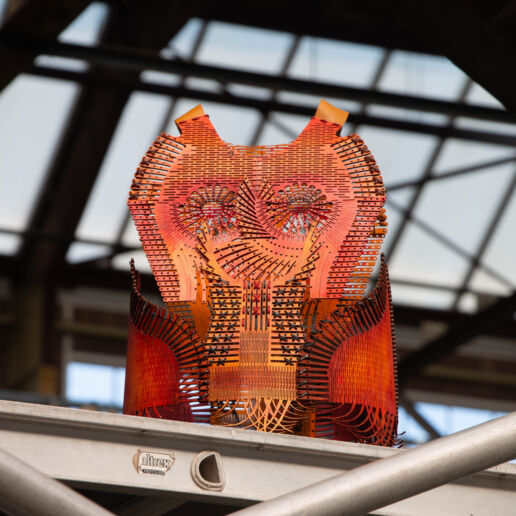
———————————————————————–
THIS MIGHT BE ALSO INTERESTING FOR YOU
KEYHOUSE NEWS – MOMENTUM
1. September 2024
Momentum plays a crucial role by providing the technology to create and manage these digital passports for fashion brands & suppliers ensuring compliance and fostering circular product development.
Cartoon – Fashion for courage, joie de vivre and self-realisation
1. September 2024
Cartoon sweeps through the fashion world with a fresh breeze of optimism, bringing colour not only to the wardrobe but also to everyday life.
Sustainable Innovations – Suzanne Oude Hengel
31. August 2024
Suzanne's goal: to push boundaries, experiment, and challenge the way things are done.
"How do our actions contribute to the better?"
What is currently happening in the industry of innovators, transformers and forwardthinkers?
Different developments can be observed – especially when it comes to upcoming designers and creators, which is very interesting yet inspiring. Newcomers are about either entering the industry or creating their own one; furthermore, they all developed a very high professionalism in everything they do and how they present their ideas. Storytelling matters, that’s why we see crafts that concern and that communicate about thoughts, materials and backgrounds. They somehow reflect on the state of the industry and/or they question current systems. Just with the eye on possibilities, not to add critique. It is a friendly way to inspire.
You just said creators are “entering the industry or creating their own one”. What do you mean by that?
Well, actually right as I say. Either people and ideas enter an industry OR they create an industry. Entering means that designers or creators just fit into an industry and can get part of it or they can develop their own techniques and make it scalable and somehow create their own. Let me give you an example: WINT Design Lab discovered a new material and also discovered how to use it in order to make it relevant for the market. Either they can enter the industry OR if they find possibilities to cover all the needs within the supply chain and develop the machines to produce in a big scale, they could go big and just create their own industry.

Simon Angel
What other developments can you identify?
Back in the days, let’s say about five years ago, there was mainly one person behind a new idea that was working within a tiny studio. Compared to that, everything is so much more professional: being a material designer, you can have a studio and work with employees who assist. That is nowadays how designers get ready to present their idea to the market. You need people who bridge the gap between the studio and the market. I personally recognize a huge potential in this point of professionalism, because people get ready to connect – young designers now offer representative samples and get in touch with the industry on a very professional level. Newcomers inspire the industry.

What sounds very interesting. What do the newcomers do differently?
Things that impress the industry: crafts that concern and communicate. The designers and their innovations want to tell us stories: it’s about the material, systems (and old behaviours) but also the designs. We can get glimpses into cultural backgrounds, different techniques, social aspects and so much more. For example, the project “Rootful” by Zena Holloway and the project “Choub” by Mehdi Mashayekhi show off how to create a material out of seagrass or wood with the implemented idea to use the finished garment or the designs as tools to communicate.
That’s a positive development, isn’t it?
Yes, it is. But one thing should not be forgotten: we are in the middle of a delicate discussion on the urgency of creating, within that everybody has to
put their own position into a fresh perspective. I sometimes find it important to take a bit of a distance and ask rhetorically questions like: So what? We are
leaving the era of RE-thinking we are entering an era of PRE-thinking. We can challenge ourselves in critical self-reflection with a future smile.
We should not design just to be a designer or cook just for the sake of being a chef. We should not create just to be a creator. We should not just buy new stuff, only for the sake of being a consumer. Way more, we should cook when people need food, design when designs are not good enough and create when the world needs a new product. Let’s stay critical and ask ourselves over and over again: how do our actions contribute to the better?
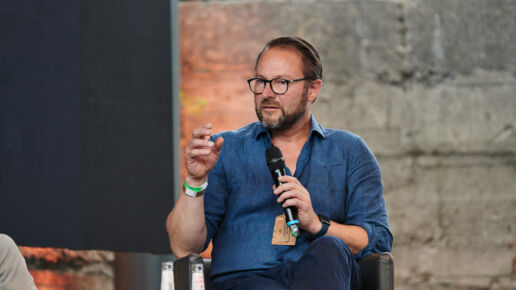
EXPOLRE AND GET INSPIRTED AT MUNICH FABRIC START
IN THE SUSTAINABLE INNOVATIONS AREA AT KEYHOUSE – H5!
Discover more industry-changing innovations at our upcoming trade shows:
Meet Saitex - the vertical Vietnamese Denim Entity
Global jeans manufacturer Saitex is going vertical as it officially announces the opening of its first denim fabric making mill in Vietnam. The new 100,000 square meter facility is located 40 minutes from its cut & sew factory near Ho Chi Minh City where 18,000 pairs of jeans are made on average per day.
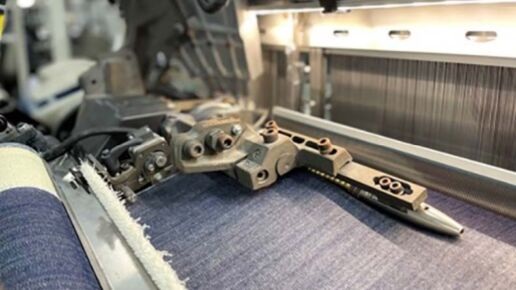
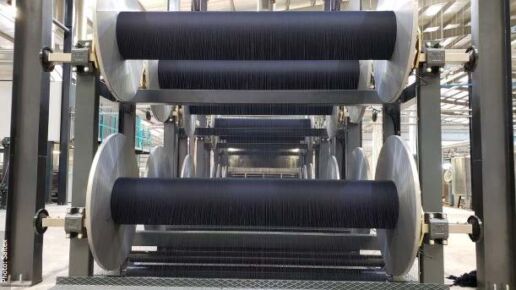
The new mill covers all operations from yarn spinning to weaving and to fabric dyeing and finishing. Saitex has announced it will produce 2 million meters of fabric per month, or 24 million yearly, and some 750 tonnes of yarn per month. These new operations have created 630 new jobs and the company says it will employ 1,000 at full capacity. As it has already done at its cut & sew factory, 20% of the jobs will be filled by people with disabilities.
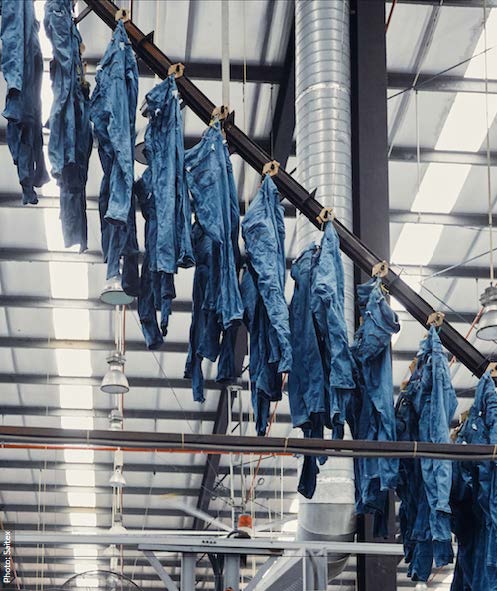
Like Saitex’s “Factory of the Future” in Los Angeles, CA, the new facility incorporates the latest and lowest impact technologies. The mill is equipped to produce yarns in pure cotton or in blends in dual-core, multiple-core and SiroSPUN technologies.
For indigo dyeing, Saitex has installed the Smart Indigo system that pre-reduces indigo via an electrochemical process. This, the company says, leads to lower CO2 emissions by 90%, requires 70% less energy and 30% less water, with oxygen as the only product released. Karl Mayer rope dyeing machines lead to further environmental savings, thanks to fewer dye bathes, and a 30% reduction in indigo and chemical usage.
Other eco-responsible features at the new site include LEED Gold Certified materials for the building, 15,000 solar panels, greywater recycling and rainwater collection systems. A vegetable garden covers 40% of the total site to feed workers and local communities. Saitex says it has also planted 6,000 trees in the industrial park, and has offset its carbon emissions by planting 50 hectares of mangroves in Vietnam, as part of its plan to contribute to climate neutrality by 2025.
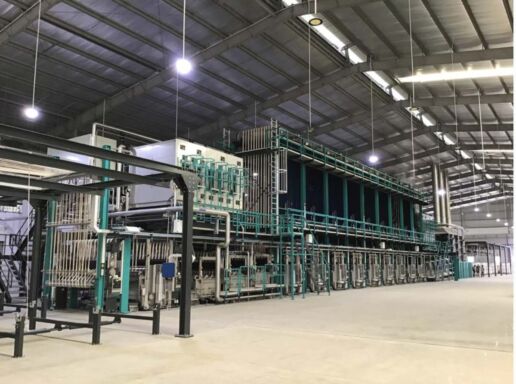

“It has been our long-term vision to close the loop on our operations. With the opening of the mill and the upcoming launch of our textile upcycling facility, Stelapop, our vision will be complete. We will close the circle, allowing us to provide unprecedented transparency in denim production and the ability to turn apparel and textile waste into high-quality goods. Our target is to become the most sustainable fabric mill on the planet making fully circular production possible for our customers.”
Sanjeev Bahl, CEO und Gründer von Saitex
This might be also interessting for you:
New Fabric Collection by Annanemone
16. August 2024
All of Anna's designs are created by hand mostly through the use of gouache and her work is greatly influenced by her love of nature, animals and plants that are not often seen depicted on clothes and products.
FABRIC HIGHLIGHTS & MATERIAL NOVELTIES FOR AUTUMN.WINTER 25/26 – PART III
15. August 2024
Textiles are the fabric from which our passion is woven.
BLUEZONE NEWS FOR AUTUMN.WINTER 25/26 – PART I
14. August 2024
Each piece in the new BERTO FW 2025 collection is designed to offer both aesthetic appeal and functionality, catering to a wide range of fashion needs while promoting eco-friendly practices.
The Source Collection’s News at MUNICH FABRIC START
13. August 2024
The Autumn-Winter collection of Kikis Fashion aims to offer a range of pieces that are functional, practical and stylish.
New Fabric Collection by LICA
12. August 2024
LICA likes to put emphasis on this feminine energy, because we believe this is what the world needs right now.
Partnering for a Greener Future
9. August 2024
By working together, companies are able to share expertise and resources, leveraging each other's strengths in design, technology, or sustainability practices.
Additionals Trends Autumn.Winter 25/26 – Part 2
8. August 2024
The four themes represent a wide variety of trends in colours, designs and materials and combine the innovations in the areas of tape, waistband, textile and label.
New Fabric Collection by Studio Splash: Creative Print Design for Women’s Wear
7. August 2024
Cold colour inspirations dominate, with lively accents in green and blue nuances.
FABRIC HIGHLIGHTS & MATERIAL NOVELTIES FOR AUTUMN.WINTER 25/26 – PART II
6. August 2024
LILABLUM dyes natural fibers with food waste, wood industry byproducts, and plant roots - an approach that is sustainable, and forward-thinking. The pioneering textile company blends tradition with innovation in their latest fabric collection.
New Felted Fabric Collection by Gottstein: Where Trends Meet Sustainability
29. July 2024
Gottstein's new felted fabric collection combines exquisite raw materials, innovation, and sustainability. Here’s a glimpse into what makes this brand-new collection so special...
Sustainable Innovations #6: Wearable muscles by MotorSkins
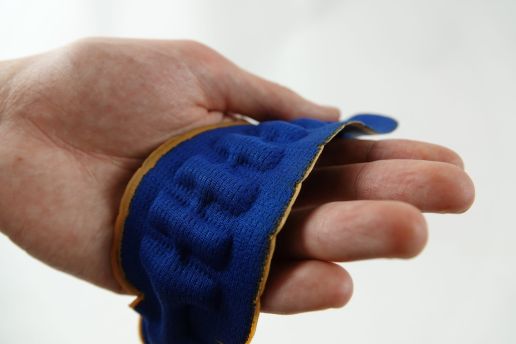
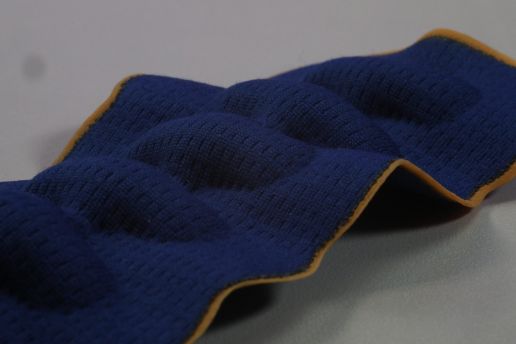
Innovative, intelligent, interactive: MotorSkins is a pioneering start-up in the field of shape-changing soft-robotic textiles. The Berlin-based company produces garments that help muscles move without any electronics such as batteries or motors – making them a pioneer in the industry. The first item produced is a compression garment for the legs.
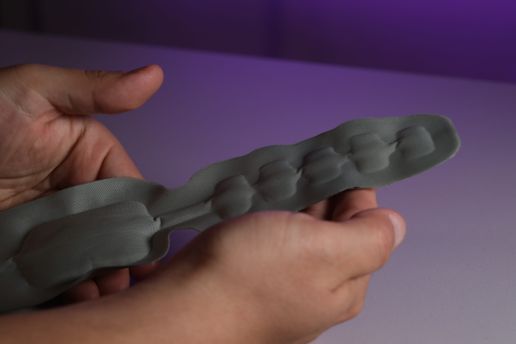
The special feature: the textiles are being stimulated by the movement of the users thanks to the new design and the innovative material. This creates a cycle: when the foot of the user compresses one part of the circuit against the floor (during a step), the pressure and volume are transferred to the active part, which powers it.
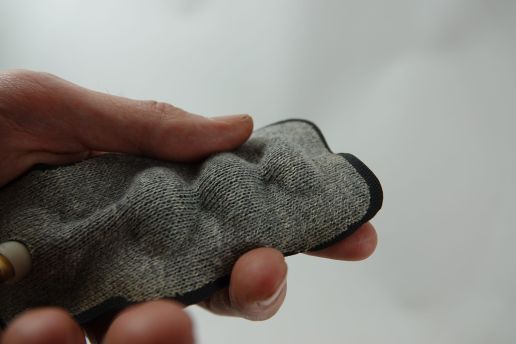
As an interface between sport, wellness and health, the start-up creates products that can be used medically, for relaxation or to support movement, depending on requirements. Currently, the young, international team at MotorSkins is working on textiles that are attached to the joints to make running easier – either for normal movements or also for illnesses. Inspired by nature, made for people.
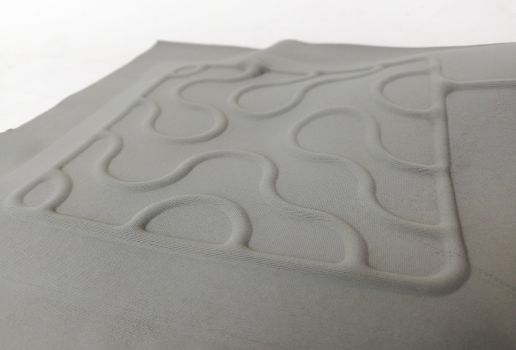
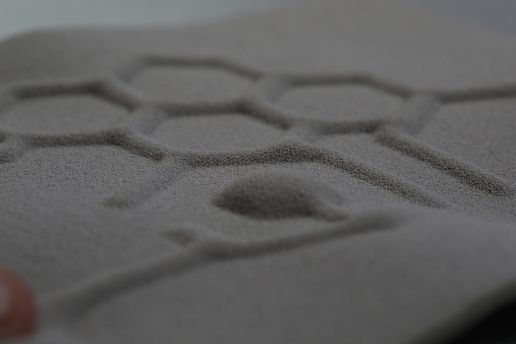
“MotorSkins technology bridges the functionality of soft-robotics with the versatility of textiles. We are a development platform for applications that explore human-machine interaction. Our technology creates a new paradigm of innovation in materials and sustainability where smart active elements are made without integrating electronics or batteries.”
– Juan Opitz-Silva
Follow on
For more information about SUSTAINABLE INNOVATIONS, see this interview with Simon Angel, curator of the Sustainable Innovations Forum, and the following articles:
“Pre-Action”: An interview with Simon Angel, curator of the Sustainable Innovations forum >>
“Biotic” by studio Lionne van Deursen >>
Flower matter by Irene Purasachit >>
Offcuts collection by Seok Park >>
Sunkolor by Panorama Fabrics >>
Sustainable Innovations #5: The Healing Imprint
Emotional healing through clothing – where science and textiles come together: The Healing Imprint explores the therapeutic potential of knitted garments. Bodysuits, gloves, socks and pillowcases are made to stimulate acupressure points on different parts of the body such as the hands, feet and head when moved. The custom-made textiles have grids through which small massage balls can be moved. By this, the acupressure points can be targeted.
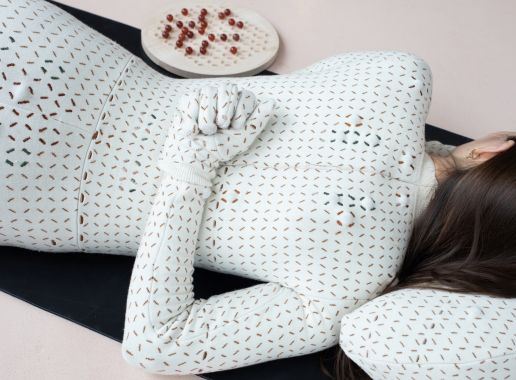
Laura Deschl is not only the designer of these special textiles, but also has a background as a yoga teacher – she used her knowledge to develop a yoga-based movement practice that uses one’s own body weight to increase pressure on certain points of the body. According to Deschl, trauma can also be worked through with this method. In combination with a trauma-sensitive yoga practice, the clothing thus becomes an individual tool that can release and dissolve even deeper emotions. The Healing Imprint shows how the fields of science, economics, medicine, psychology and textile production can be harmonised in an interdisciplinary way.
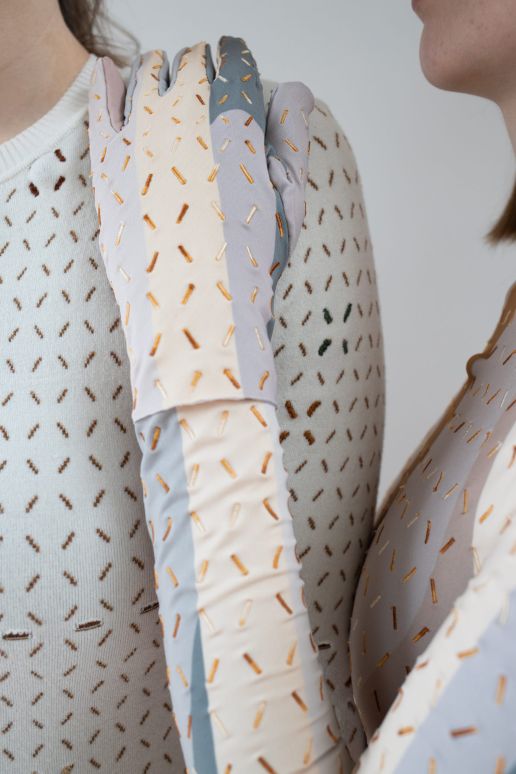
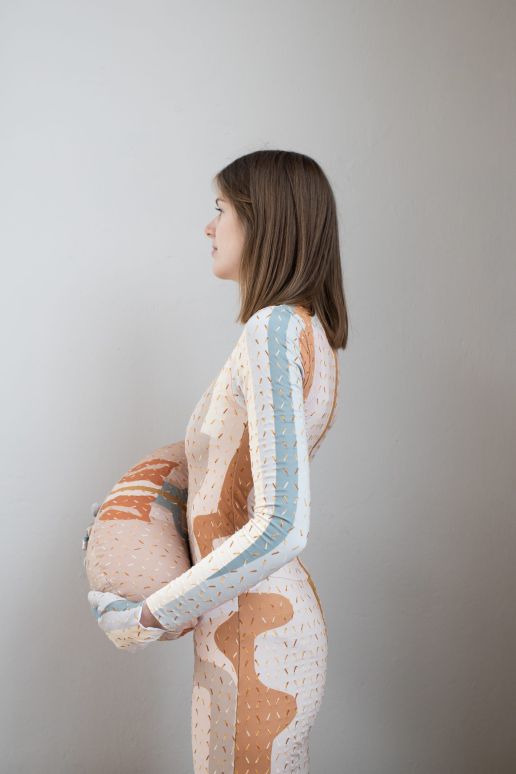
Allowing and feeling emotions: Mental illness and trauma are often still a rather invisible topic in society. One of Laura Deschl’s major concerns is therefore to draw attention to issues surrounding mental health and the traces of trauma on the body and to destigmatise them. Deschl wants to help patients train their body awareness and in this way bring them closer to their body again.

“With The Healing Imprint garments, the acupressure aims to help the wearer access buried memories or emotions, while the trauma-sensitive yoga practice facilitates introspection around those recollections. Considering that our society has an intense history of war, severe traumatisation and high exposure to everyday postwar stressors were common. These memories can get stored in the body’s memory and even be passed on over generations. Emotional wellbeing and healing is thus another angle to look at sustainability. A balanced body and mind are more likely enabling to make decisions that are in alignment with other humans and the planet.”
– Laura Deschl
Please find more info about SUSTAINABLE INNOVATIONS in this interview with Simon Angel, curator of the Sustainable Innovations Forum:
Interview about Pre-Creation, -Action and -Connection in our industry >>
Offcuts collection by Studio Popopo >>
Sunkolor by Panorama Fabrics >>
Sustainable Innovations #4: "Sunkolor" by Panorama Fabrics
With climate change still gathering momentum, the intensity of the sun’s invisible UV rays is also increasing. The problem: the intensity is not visible to the eye. The result: sunburn and damage to our skin that sometimes only appears years later which makes it all the more important to protect our important organ.
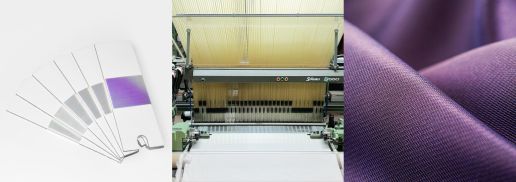
Exactly this is possible with Sunkolor. The material helps to visually perceive sun exposure and to establish a healthy relationship with it as a result. The technology Panorama Fabrics, the material driven Design Studio from Berlin, manages to make UV rays visible. For this purpose, Sunkolor yarns, which are produced in Germany, are woven into textiles.
When exposed to sunlight, the colour of the material changes thus indicating the dangerous UV index range. The change of colour makes it immediately clear once the situation becomes critical. In the first step, the yarns will be attached in labels to hiking backpacks. In the long term, a variety of different or outdoor garments will be made from this yarn.
The vision:
Create new tools to adapt in a changing environment caused by climate change.
Panorama Fabrics studio aims to contribute with its own products and pioneering designs to highlight the possible interaction between textiles, humans and our climate. Research is being carried out on innovations to make more people aware of the effects of climate change and at the same time support them in dealing with it. The two founders, Gabriela Kapfer and Karina Wirth, share a fascination for different materials and a passion for interdisciplinary collaboration, which enables them to create something new and progressive together.
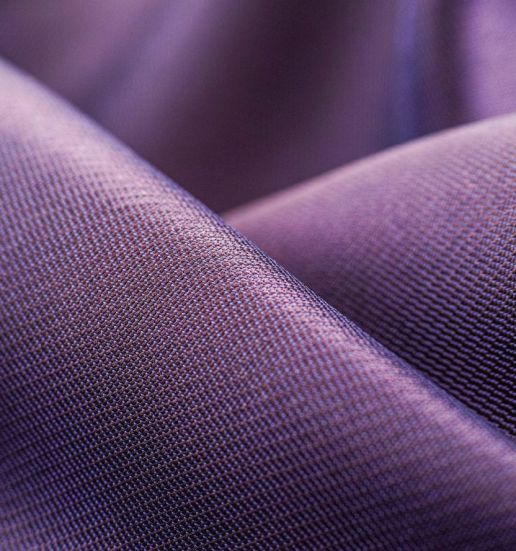
“Sunkolor makes the invisible visible to create awareness.”
– Gabriela Kapfer & Karina Wirth
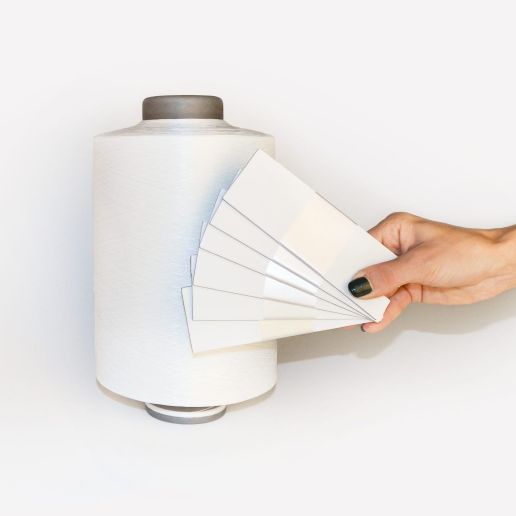
Please find more info about SUSTAINABLE INNOVATIONS in this interview with Simon Angel, curator of the Sustainable Innovations Forum and in the articles about further projects:
Interview about Pre-Creation, -Action and -Connection in our industry >>
Offcuts collection by Studio Popopo >>
Sustainable Innovations #3: +17,4% - Offcuts Collection
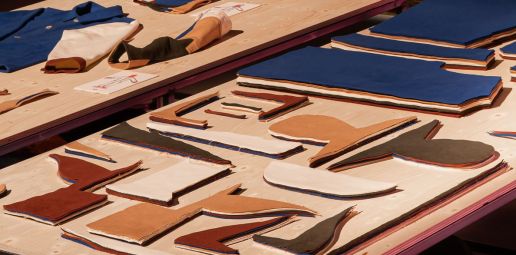
Making good use of leftovers from textile production – and using them to upgrade the same garments?
It’s possible: while working in the garment industry, product designer Seok Park saw the vast amounts of leftovers that are created. It inspired him to put them to good use. With his studio Popopo from Eindhoven, he launched the OFFCUTS project for this reason. In the OFFCUT collection, additional parts for garments are made from fabric scraps – fabric scraps that are left over from the production of exactly these garments and that offer added value when the garments are used. The goal is not only to reuse scraps, but also to add value to them to make another product and thus incorporate them into the garments produced.
Each work is named after the percentage that indicates the waste in the production of garment patterns.
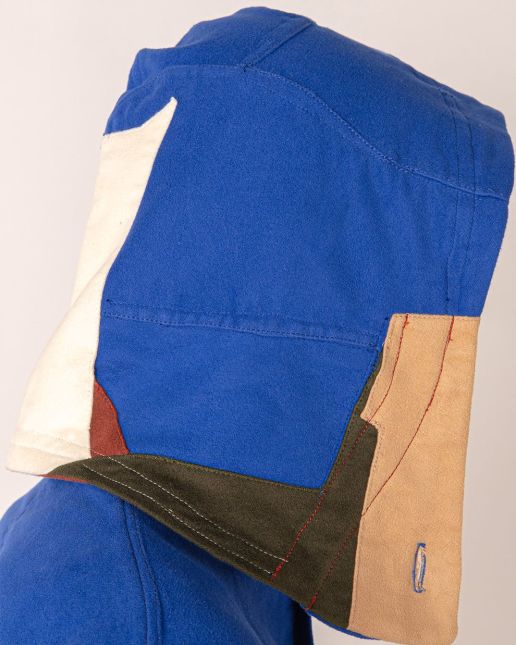
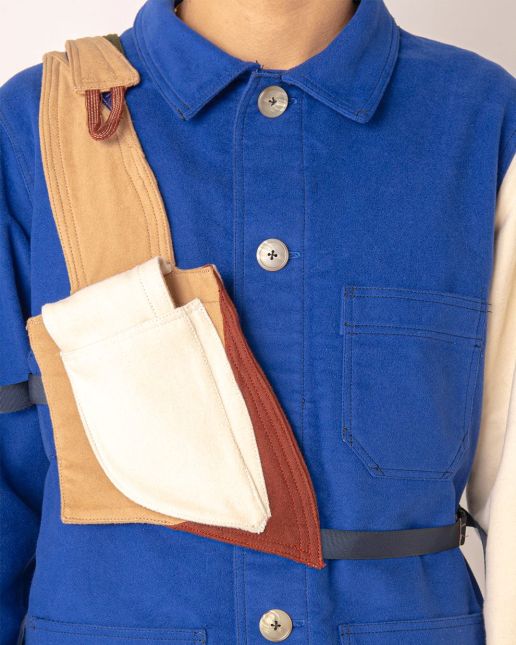
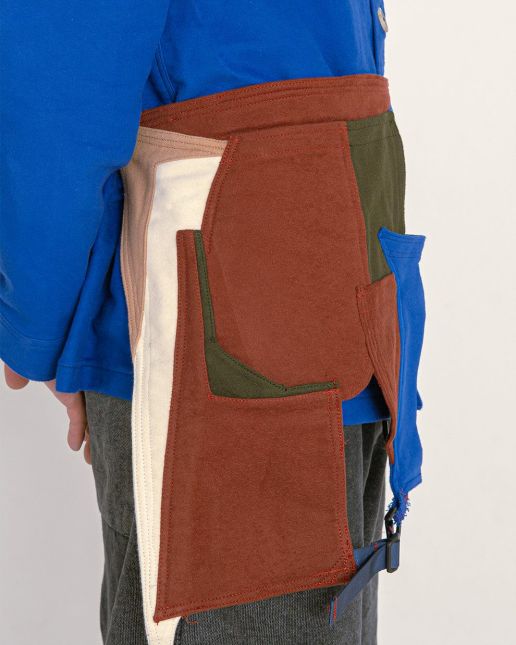
Re-use, re-value, re-connect
“Through the project, I would like to point out the potential materiality of these leftovers by discovering their own unique story as a general material beyond industrial by-products or reusable waste.”
– Seok Park
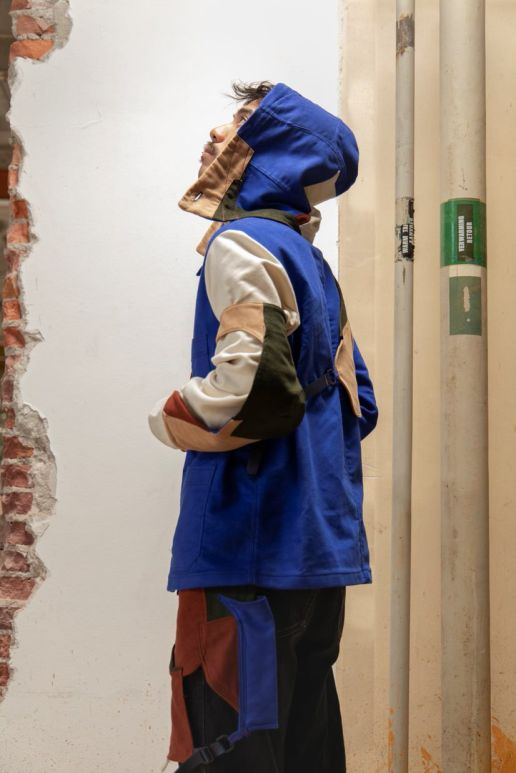

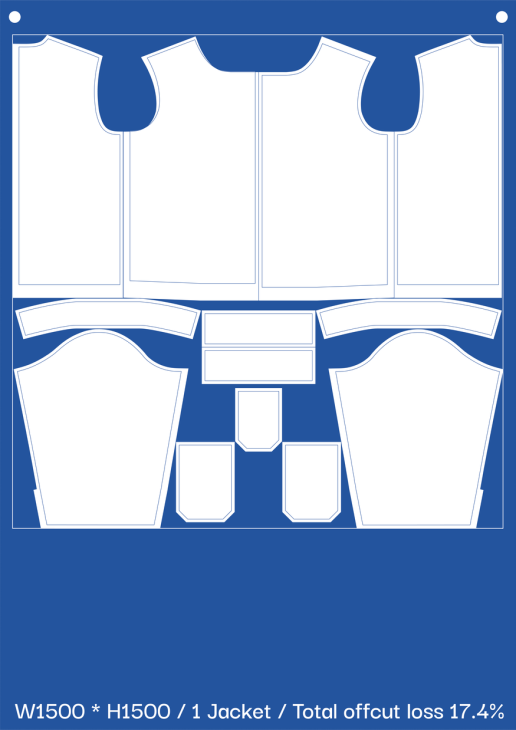
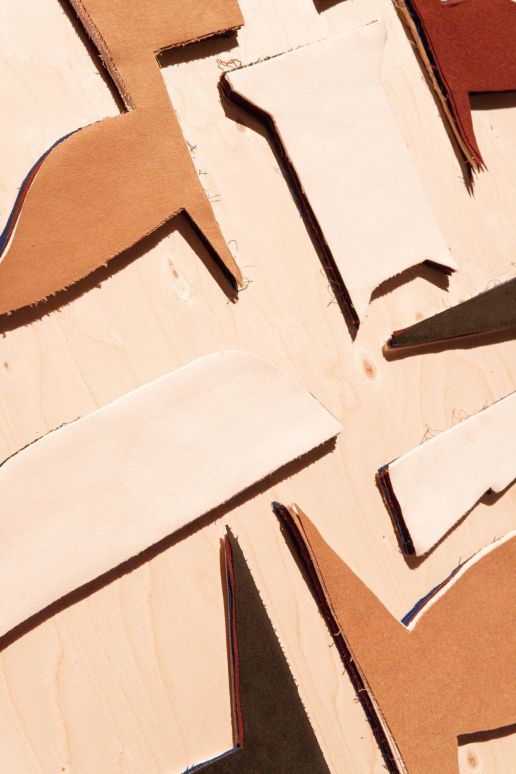
17.4: This is the percentage of excess cut produced in the production of chore jackets, the classic workwear item. The functional value is now obsolete – so the project uses +17.4% leftover pieces from 60 Chore Jackets to produce a collection of practical accessories. These accessories offer additional benefits for specific conditions such as weather conditions of the different seasons and more.
—————————————————————-
Find more infos about SUSTAINABLE INNOVATIONS in the interview with Simon Angel, curator of the Sustainable Innovations forum, the project #1 ‘Biotic’ and the project #2 ‘Offcuts’:
Interview about Pre-Creation, -Action and -Connection in our industry >>
Sustainable Innovations SS23 #1: Bacteria to wear by Lionne van Deursen >>
Sustainable Innovations SS23 #2: Flower Matter by Irene Purasachit >>
—————————————————————-
Textile Inventions You Need To Be Acquainted With In 2022
Textile Inventions You Need To Be Acquainted With In 2022
(If You Are Not Already)
AN INDUSTRY INSIGHT BY FASHNERD FOUNDER MUCHANETA KAPFUNDE.
The race to digitise the textile sector is expected to continue to gain momentum throughout 2022. However, with sustainability still a key theme, the good news is that game-changing innovations are helping a very traditional industry recognise business opportunities that push towards a fundamental shift in industry practices and any future developments.
Reimagining the Textiles System With a New Mindset
No longer held back by conventional processes, more and more textile manufacturers, suppliers, buyers, and designers are now transitioning towards a textile system that allows them to harness better economic, societal, and environmental outcomes. In addition, prioritising the application of new technologies has helped the textile industry take those first steps of progress towards adopting new business models, technological innovation, and radical collaboration.
“Our success depends not only on the work within our own value chain but on disruptive partnerships across a broader textile production and manufacturing ecosystem,” stated Cyrus Wadia, VP Sustainable Business and Innovation at Nike, in the Ellen MacArthur Foundation report “A New Textiles Economy: Redesigning Fashion’s Future”.
As technology continues to have a significant impact on the textile industry, in 2022, make sure you keep an eye on the following innovations from these three game-changing companies:
1. Kelp – One Of The Most Renewable Natural Resources: Algiknit
In the business to make textile production more environmentally conscious, Algiknit offers material options that perform as well as conventional materials.
“The yarn we’re producing today has the look and feel of the natural fibres consumers are familiar with, plus all the makings of a no-compromise conscious material,” said Aaron Nesser, co-founder and CTO of AlgiKnit, in a statement.
Staying ahead of the curve in fabric innovations, Algiknit could effectively bring kelp-based yarn into the mainstream. The startup is currently poised to scale the production of eco-conscious yarns for use by forward-thinking global fashion brands.
With Kelp considered one of the most renewable natural resources globally, the Brooklyn-based material-maker of carbon-neutral, toxic-free textiles has spent the past four years developing technology to produce yarns on a commercial scale. They hope that they will be able to scale production to a point where they will be able to meet growing material demand in time.
2. Freshwater-free Textile Fibres, The Next Alternative: SaltyCo
UK startup, SaltyCO, has come up with freshwater-free textile fibres. Hoping to establish an alternative to freshwater-intensive cotton cultivation, SaltyCO is on a mission to tackle the side effect of wasteful freshwater use by rethinking the system and installing a new category in sustainable textile production.
Acknowledging that there is no single solution to “sustainability”, SaltyCO’s vision is to build a planet-healing supply chain that begins with an approach to regenerative agriculture. Hoping to create the most impact by sourcing their plant material, the materials science company has so far found a suitable salt-tolerant plant for the textile supply chain. They are now researching regenerative cultivation techniques and textile products. The outcome has been BioPuff, a plant-based fibre fill produced in SaltyCO’s laboratory in Scotland.
An alternative to animal and petroleum-based products, BioPuff is made of pure cellulose and has been reported to reduce petroleum by 70% in every jacket impact and save up to 25 litres of fresh drinking water.
3. Built with Biology, Not Oil: Biofabricate
Do you know that we are at the dawn of a new age where we can biodesign and biofabricate? No longer confined to small-scale experiments, biomaterials have garnered interest from well-known brands, like Adidas and Hermès, looking for plant-based alternatives to petroleum.
Recognising the potential of ‘Living Factories’ like Mycelium, Bacteria, Yeast and Algae, is Biofabricate. They are a startup that believes that a sustainable material world is built with biology, not oil. Recognising that there are no shortcuts, Suzanne Lee, founder and CEO of Biofabricate, believes that patience and tenacity by the industry should be a requirement.
“This can be a struggle for many designers – who like fast outcomes. But unfortunately, biology doesn’t work like that”, explained Lee when interviewed by Nextnature.net.
As a new generation of biofabrication and cell agriculture startups continue to set the standard, Biofabricate has become the go-to for those looking to bridge design with biotech intelligently.
In the current landscape, textile inventions are setting the standard by driving the textile industry to understand the facts and participate in the solutions. But, in the end, material innovation is a constant journey, one you should already be on if you aren’t already.
Are you interested in more indepth facts and figures of the new textile economy?
Check out FashNerd.com to follow the journey of the industry or read one of the following blog articles:
Antimicrobial Textiles, Hero or Hype?
The New Textiles Economy, A Catalyst For Transformation?
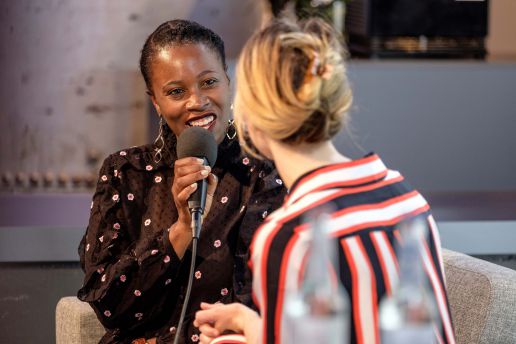
ABOUT THE AUTHOR
Founding editor-in-chief of FashNerd.com, Muchaneta has worked in the fashion industry for over 14 years. She is currently one of the leading influencers speaking and writing about the merger of fashion with technology and wearable technology.
Muchaneta Kapfunde | editor@fashnerd.com


